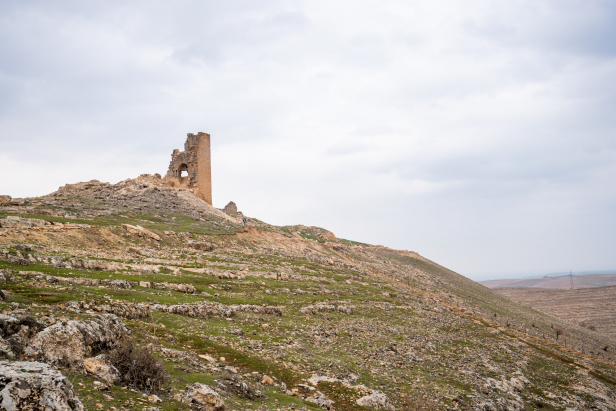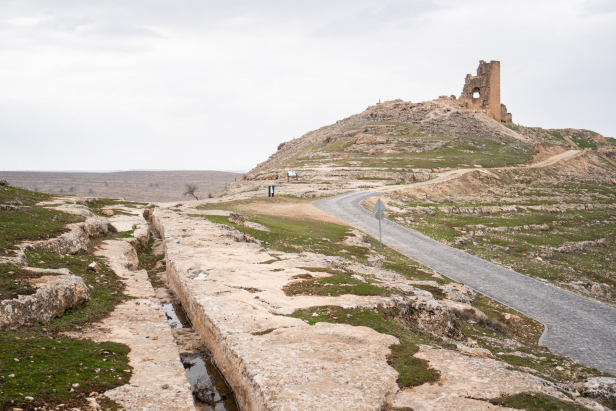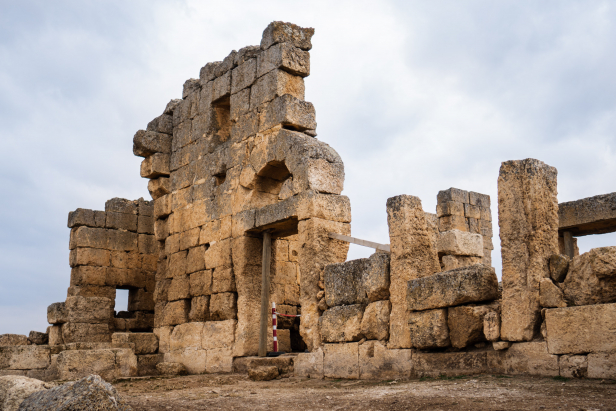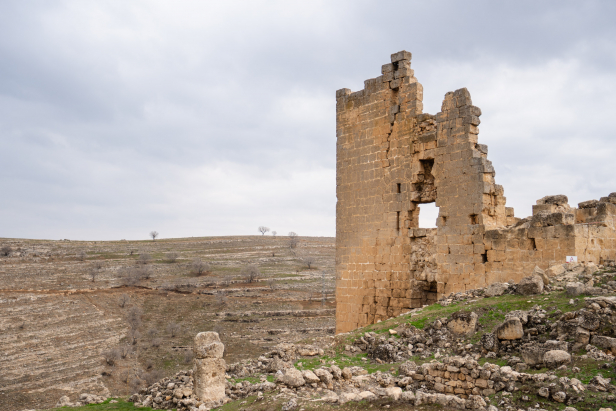The Roman Frontier Castle of Zerzevan
Zerzevan Kalesi
/ By Josh
Cost: Free
Great for: Roman History, Byzantine History, Mithraism, Castles
Established sometime during the 4th century AD, the castle of Zerzevan was built by the Late Roman/Byzantine Empire in the extreme east of its territory to serve as a garrison along the Persian frontier.
Subscribe to The Art of Wayfaring
Known as Samachi to the Romans and Byzantines, the castle of Zerzevan was built on a 124-meter-high plateau over the Mardin – Diyarbakir (Amida) road to keep watch over the valuable trade route as well as to maintain control over the area from the threat of invasion. This road is still an important route today as it was in roman times, though its establishment goes back much farther into the bronze age when the Assyrians established trade routes throughout Mesopotamia and Anatolia.

In its final form the garrison town was protected with imposing walls, reaching heights of 12-15 meters with towers reaching up to 19 meters dispersed regularly. Within these walls the town would have supported around 1000 inhabitants, consisting of soldiers, their families as well as other civilians. There were homes, an arsenal, rock-cut tombs, grain silos, a canal to bring rainwater from the surrounding hills, as well as a church found within the town.


The church was added sometime in the 6th century, reflecting a shift in the culture of the Romans and Byzantines, from the old pagan religions to Christianity. The church was small, entered through a porch on its south side, though the nave was oriented west-east. Next to the church a small building that would have served as a baptistry has also been found.
One of the most interesting sites discovered at Zerzevan has been the Mithraeum: the site of the Mithras Mystery Cult. Mithraism grew in the Roman empire but was rooted in the old Persian religion. While it had its roots in the east, Mithraism was predominantly practiced in the European and North African territories of the Roman Empire. The Mithraeum of Zerzevan is the only one to have been discovered so far along the Roman – Persian frontier. As with all Mithraea, the Mithraeum at Zerzevan is a rock-cut cave like structure with niches and bowls cut into the walls for lights and sacrifices. In a large niche in the eastern wall is a scene of Mithras sacrificing a bull.
Subscribe to The Art of Wayfaring
In modern times a village grew up among the ruins. The village was abandoned in the 1960s when the villagers moved down into the valley. Excavations didn’t begin here until 2014.
Among the usual historic artifacts uncovered during the excavations here, a rather out of place object was discovered. A badge-like button bearing “The Great Seal of the United States” was found here. The button has an eagle behind a striped shield with arrows and an olive branch in its talons as seen on the US one dollar bill. Buttons like this have been in use sine 1902, though it is a mystery how this badge came to be in Zerzevan.
How To Get There
Car
Built to oversee the comings and goings of the ancient Mardin-Diyarbakir highway, this ancient roadway is still the main route between these two cities. From Diyarbakır head south on the D950 for 45 kms. Zerzevan will be on your left. From Mardin, head north out of the city on the D950 to Diyarbakır. 45 kms out of Mardin turn right to Zerzevan Castle.
For more about car rental and driving in Turkey make sure to read our full drivers guide.
Where To Stay
Today Zerzevan is in a rather empty region with no hotels or accommodation for visitors. Your best options are in the fantastic cities of Diyarbakır or Mardin where you’ll find a great selection of modern and boutique hotels.
Other Tips
Planning on visiting Zerzevan Castle? Make sure to check out what other sights there are to see in Mardin, Diyarbakır, and the rest of Turkey’s East!
Subscribe to The Art of Wayfaring
Have any tips or info to add? Spot any mistakes? We’d love to hear about it.
